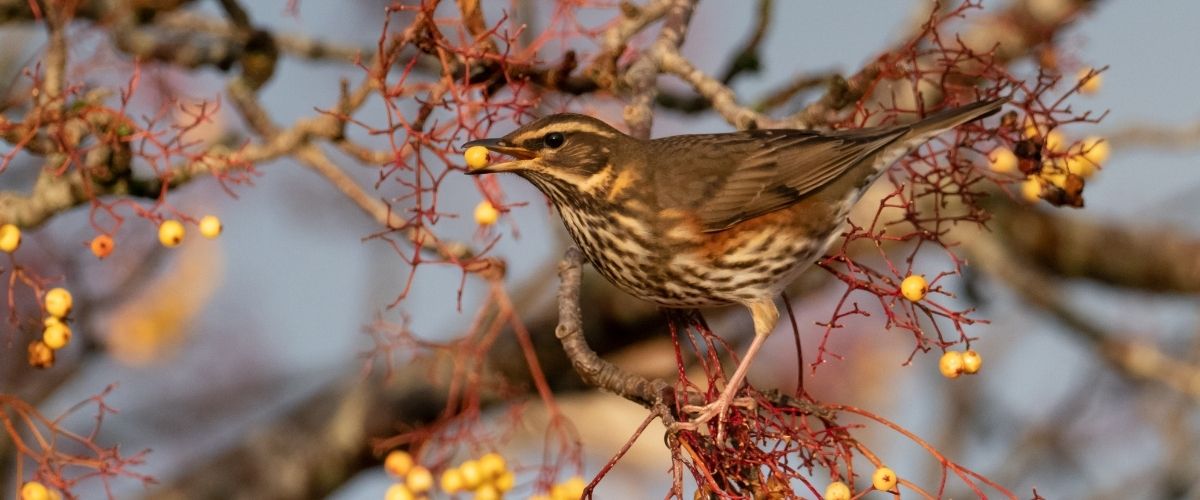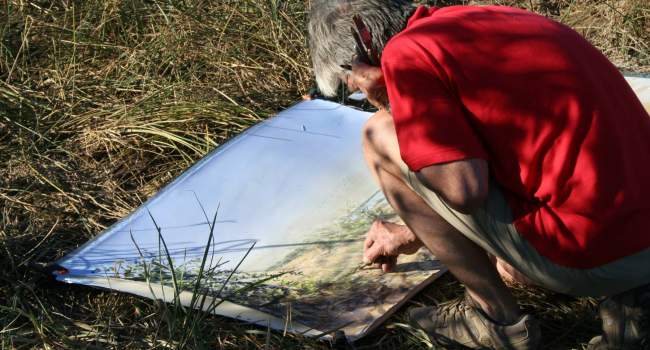
Migration blog (9th – 15th October)
BTO Media Manager, Paul Stancliffe discusses the week in migration
There’s an old adage in birdwatching that goes: "The rare bird travels alone," and to some extent this is true. Often a rare birds will turn up, or at least be found, on days when very little else is on the move.
Bird migration is largely weather dependent, but following the weather forecasts can only give a rough idea of what might happen. At this time of the year, the ideal conditions would be high-pressure over Scandinavia, giving relatively still, clear conditions for birds to begin moving, aided by the north-easterly/easterly airflow off the bottom of the weather system. These conditions ought to ensure that birds that want to cross the North Sea, like thrushes and finches, are able to do so.
During a movement like this, the best conditions to observe migrants arriving in the UK and pushing on inland are often associated with a low-pressure system that brings south-westerly airflow and rain, which forces the birds to fly lower or land until conditions improve. So, good weather in Scandinavia, combined with easterly airflow and poor weather on this side of the North Sea should be a recipe for some visible migration and the arrival of migrant birds.
Right now in those conditions Redwings and Song Thrushes should be on the move along with Bramblings, Linnets and Siskins. Others such as Pied and White Wagtails, Skylarks and Reed Buntings should also be in the mix, but it is probably Meadow Pipit that will be most obvious. Wildfowl will also continue to move and Pintail, Teal, Shoveler, Wigeon, Tufted Duck and Pochard numbers should all begin to swell as more of these birds arrive.

So, what about rare birds and that old adage? The majority of rare birds are coming from much further afield and are a long way off course, blown here by very stormy conditions, often the conditions that would bring migration to a halt. Of course, birds like the Red-eyed Vireos that are currently on the Isles of Scilly and in Cornwall would have left on this leg of their journey in North America in reasonable weather, but will have got caught up in a storm that carried them across the Atlantic. Presumably, they were in the company of lots of migrating birds when they set off but some will have landed, if possible, to wait out the storm. Others will have ndfall in thbeen blown out to sea, with a lucky few of those making lae UK, nearly always alone and on days when there is very little movement here.
It is a little more complicated with rare birds from the east and these may well arrive in a movement of common migrants. Both will probably have been waiting for good conditions to move on the other side of the North Sea. Vagrants such as White’s Thrush will have arrived on an easterly airflow across the continent before continuing across the North Sea.
Looking ahead
For the first part of the week we are going to largely be in westerly and north-westerly airflow and might see one or two more North American birds found; Blackpoll Warbler and Grey-cheeked Thrush could be on the cards. As the winds turn more northerly, Whooper Swans could move in force, along with Pink-footed Geese, more Yellow-browed Warblers and Red-flanked Bluetails and, maybe, the first large movement of Goldcrests. As always, let us know what you see in the comments or by adding your records to BirdTrack.







Share this page